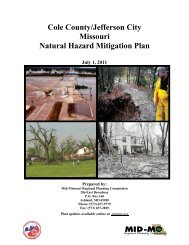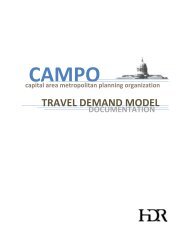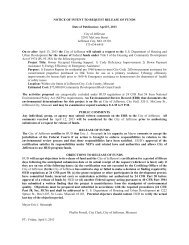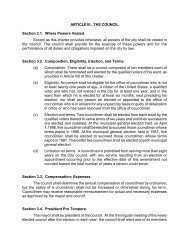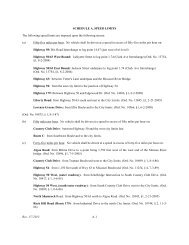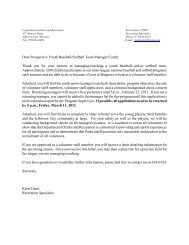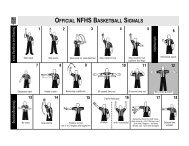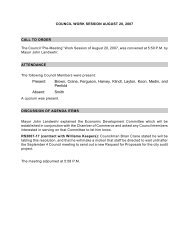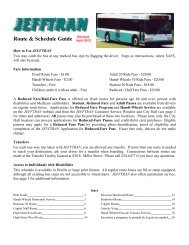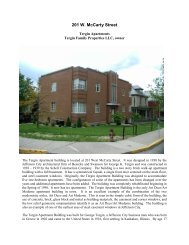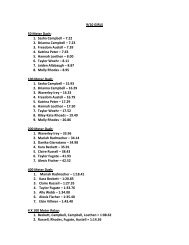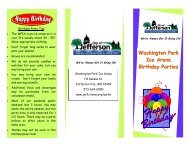MO Freight Executive Summary
MO Freight Executive Summary
MO Freight Executive Summary
You also want an ePaper? Increase the reach of your titles
YUMPU automatically turns print PDFs into web optimized ePapers that Google loves.
Missouri Statewide <strong>Freight</strong> Study Page 4<br />
<strong>Executive</strong> <strong>Summary</strong><br />
In 2001, over 370 Million tons of freight moved<br />
on Missouri’s railway network, with an<br />
estimated value exceeding $340 Billion.<br />
Of the freight tons on Missouri’s railroad system, 48<br />
percent is Coal. Farm Products, Chemical Products,<br />
and Food/ Kindred Products combine for an<br />
additional 34%. Seventy-four percent of rail tons<br />
pass through the state, 20.5 percent are imports, and<br />
5.3 percent are exports<br />
In 2001, over 190 Million tons of freight moved<br />
by water in Missouri, valued at nearly $5 billion.<br />
Industrial<br />
Chemicals<br />
4%<br />
Petroleum<br />
Products<br />
10%<br />
Coal & Coke<br />
10%<br />
Fertilizers<br />
4%<br />
Source: U.S.A.C.E<br />
Animal<br />
Feed<br />
3%<br />
Wheat<br />
1%<br />
Iron & Steel<br />
6%<br />
Other<br />
8%<br />
Construction<br />
Mtls<br />
9%<br />
Corn<br />
32%<br />
Soybeans<br />
13%<br />
Railway <strong>Freight</strong> Movements in Missouri<br />
(Millions of U.S. $)<br />
Through,<br />
$249,694<br />
74% Intra-State,<br />
$4,318<br />
1%<br />
Imports,<br />
$41,646<br />
12%<br />
Exports,<br />
$44,729<br />
13%<br />
The Upper Mississippi River system continues to be a major mode of transportation for a variety of<br />
farm products, as well as other bulk materials such as chemicals and building materials.<br />
Commodity Groups on the Upper Mississippi River<br />
Historically, commodities transported<br />
by barge tow on the Missouri River<br />
include agricultural products,<br />
chemicals such as fertilizers and<br />
petroleum products, and<br />
manufactured goods such as building<br />
materials. However, in recent years<br />
fluctuating water levels on the<br />
Missouri River have significantly<br />
impacted barge traffic.<br />
Kansas City International and St.<br />
Louis International represent the<br />
state’s largest markets and highest<br />
respective air cargo volumes.<br />
The combined draw or “catchment” area<br />
of these airports covers the majority of<br />
the State. Kansas City International<br />
Airport acts as a consolidation point for<br />
FedEx, UPS, Airborne, BAX Global,<br />
Emery and DHL feeder aircraft and<br />
trucks that serve western Missouri and<br />
eastern Kansas.<br />
St. Louis-Lambert International Airport<br />
performs the same function for eastern<br />
Missouri and western Illinois.<br />
Missouri Air Drayage – Origin and Destination<br />
Source: Reebie TRANSEARCH, 2001<br />
Wilbur Smith Associates<br />
HNTB Corporation



